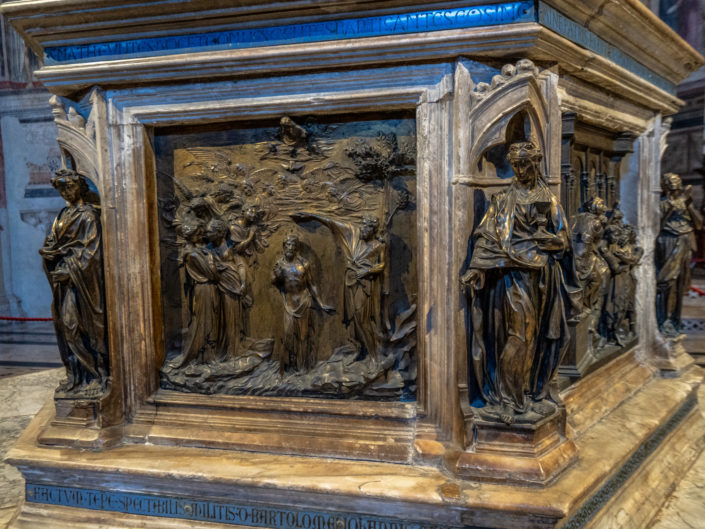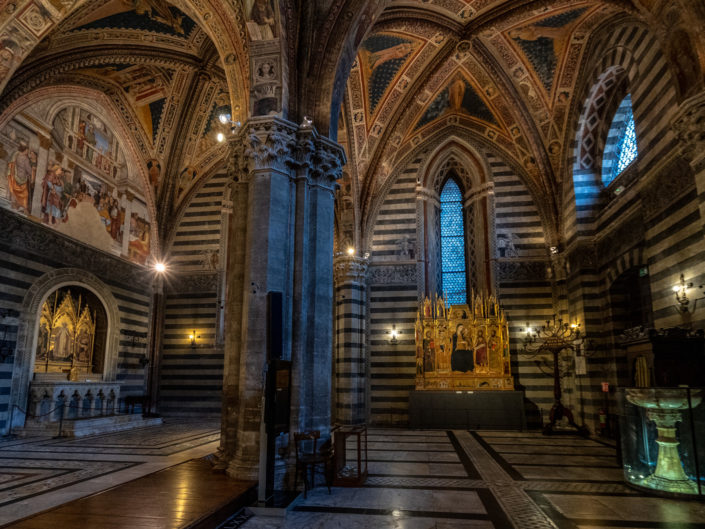Siena
Siena was a proud, wealthy, and warlike independent city-state during the Middle Ages, until its final defeat by Florence. Medieval Sienese art (painting, sculpture, architecture, etc.) is unique and of great historical importance. Some of the famous artists who lived and worked in Siena are Duccio, Simone Martini, and Ambrogio and Pietro Lorenzetti. Sienese people are fiercely proud of their city and their neighborhood (contrada). The Palio, described below, is all about neighborhood pride and rivalry, and also constitutes the unbroken continuation of a Medieval tradition associated with religion, pageantry, trash-talking, bragging, and occasional violence. It is taken very seriously and is in no way a put-on for tourists; in fact, you are likely to be less welcomed during the Palio than at any other time, and there isn’t the slightest doubt that Siena would run the Palio with great enthusiasm regardless of whether any visitors ever showed up. That said, this is a city which depends and flourishes on tourism. Siena was a very poor little city for a few hundred years after its defeat, which is the main reason that its lovely Medieval buildings were never torn down and replaced with modern structures. In the 19th century, tourists started coming. Nowadays, it is a requirement that new buildings within the city walls be built to maintain the city’s character and beauty – many are strikingly modern, yet fit in well.










